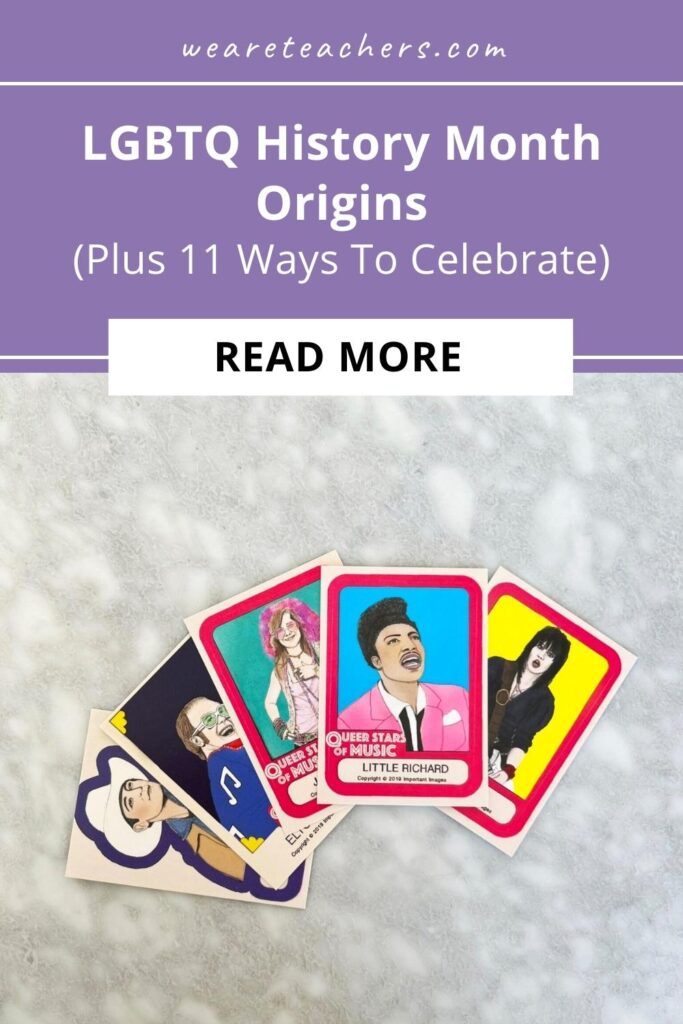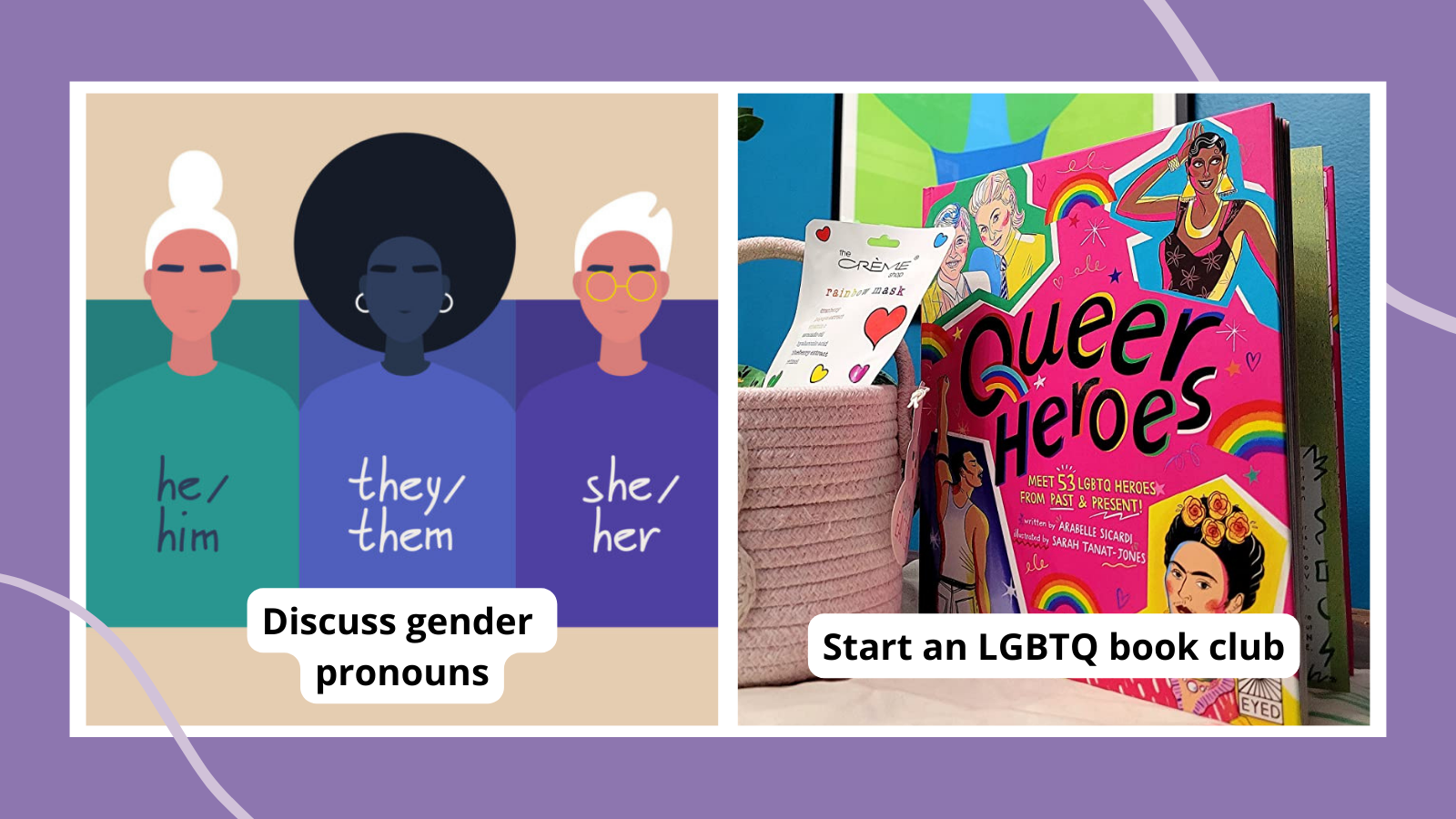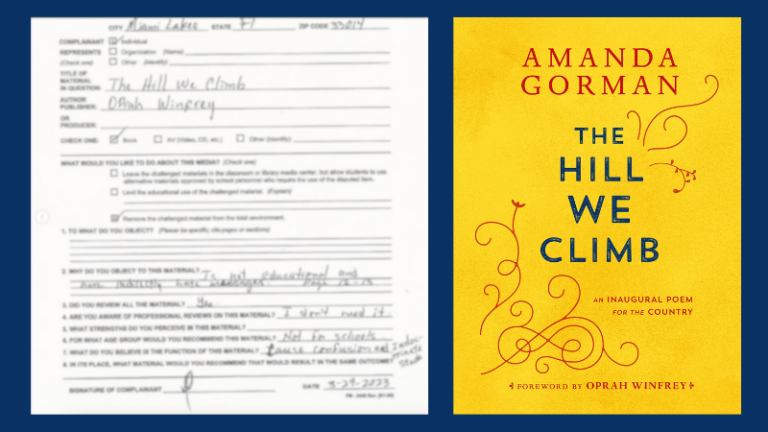While June welcomes LGBTQ Pride Month with open arms, celebrating the achievements of lesbian, gay, bisexual, transgender, and queer individuals, there’s yet another crucial chapter in this vibrant narrative that often remains lesser known: LGBTQ History Month.
The purpose of this dedicated month is to educate individuals about the rich history, achievements, and contributions of LGBTQ individuals and the LGBTQ rights movement. If you’re keen on incorporating some LGBTQ history into your classroom or homeschool curriculum, read on for fantastic ideas to commemorate LGBTQ History Month.
But before we explore the exciting opportunities for celebration and learning this month presents, let’s first understand the essence of LGBTQ History Month.
Jump to:
- When is LGBTQ History Month?
- What does LGBTQ History Month celebrate?
- Origins of LGBTQ History Month
- Difference Between Pride Month and LGTBQ Month
- Activities To Celebrate LGBTQ Month
- Steps to consider when celebrating LGBTQ Month
- More LGBTQ teaching resources
When is LGBTQ History Month?
October 1 marks the beginning of LGBTQ History Month in several countries around the world including the United States, Canada, and Australia.
The timing of this month-long celebration is far from coincidental as it aligns with some important dates in October. Not only does it encompass National Coming Out Day on October 11, it also pays tribute to the historic marches on Washington for LGBTQ rights in 1979 and 1987.
Another reason October was selected is because it falls within the school year. Often referred to as October Pride Month, LGBTQ History Month provides an ideal platform to kick-start conversations about acceptance at the beginning of the school year. This sets the stage for cultivating an inclusive classroom atmosphere. It also gives students the entire school year to find their voice, learn to accept others, understand their equality with their peers, and recognize the beauty of their individuality.
What does LGBTQ History Month celebrate?
LGBTQ History Month celebrates the history, contributions, and influence of LGBTQ citizens and communities.
Beyond historical milestones and achievements, it encourages discussions about the personal journeys and stories that have shaped LGBTQ history, fostering a deeper understanding of the struggles, resilience, and impactful triumphs of LGBTQ individuals.
But it’s not solely about history. It’s also about creating an inclusive environment where awareness, acceptance, and equality are celebrated, and where everyone is respected and treated as an equal.
Origins of LGBTQ History Month
LGBTQ History Month has its roots in 1994 when Rodney Wilson, an openly gay high school teacher from Missouri, passionately advocated for the idea of dedicating a month to honor gay and lesbian history.
Wilson’s vision, rooted in the belief of acknowledging and celebrating the historical contributions and struggles of the LGBTQ community, laid the foundation for an international observance. It’s worth noting that its observance in October aligns with the school calendar, making it a strategic choice that ensures maximum educational impact.
His pioneering spirit inspired educators, activists, and advocates worldwide to embrace the concept of LGBTQ History Month.
Why do we celebrate Pride Month in June and LGBT History Month in October?
Pride Month, celebrated in June, draws inspiration from the 1969 Stonewall Uprising. Not familiar with this pivotal moment in time? Here’s a quick overview.
On June 28, 1969, at the Stonewall Inn in New York City’s Greenwich Village, the LGBTQ community resisted a police raid, sparking days of protests. This moment marked a turning point in LGBTQ history, catalyzing the modern LGBTQ rights movement. And one year later, on the same date of the raid, protestors marched from the Stonewall Inn to Central Park in what could be called the first pride parade, a powerful symbol of their determination and the birth of the pride movement.
As for LGBTQ History Month, it is celebrated in October, coinciding with the already-established National Coming Out Day and honoring the anniversary of the first march on Washington for gay and lesbian rights in 1979. October was chosen not only for its historical significance but also because it’s a month when students are in school, providing an ideal opportunity to educate and engage kids of all ages in meaningful and age-appropriate conversations about LGBTQ history.
These two distinct months, June and October, each hold their own significance in LGBTQ history, commemorating pivotal moments and inspiring ongoing conversations about acceptance, equality, and pride.
11 Activities To Celebrate LGBTQ History Month
To create an inclusive learning environment, you’ll want to infuse some enjoyable activities that enlighten students about LGBTQ history during the month of October.
Here are some creative ideas to inspire your celebration:
Pretend to be a news reporter by writing about LGBTQ icons
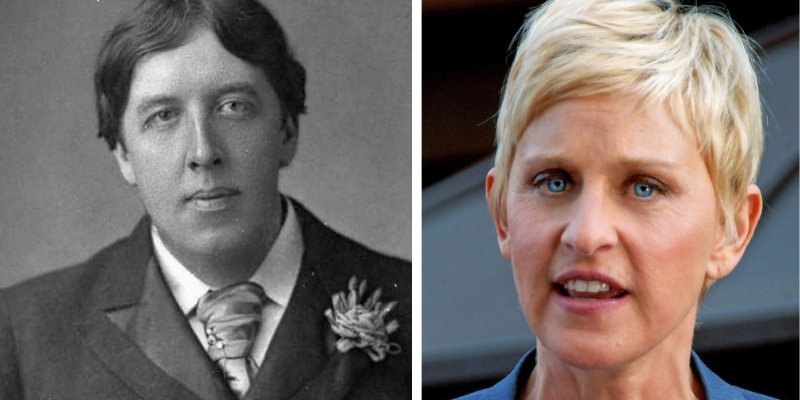
Invite your students to step into the shoes of reporters and uncover the captivating stories of LGBTQ icons. Get ready for a month of inspiring stories and budding reporters!
Here’s the scoop:
Each week, students select an LGBTQ icon who inspires them. They’ll then embark on a research journey, scouring books and online resources to uncover the icon’s life, achievements, and impact on the LGBTQ community.
Students will hone their writing and reporting skills by crafting compelling news reports about their chosen icon. Encourage them to present their news reports to the class, fostering discussion and learning. This immersive activity not only educates students about LGBTQ history but also strengthens their research, writing, and presentation abilities.
Have resources such as Queer Heroes: Meet 53 LGBTQ Heroes From Past & Present! by Arabelle Sicardi on hand to enrich this activity.
Create an LGBTQ history timeline
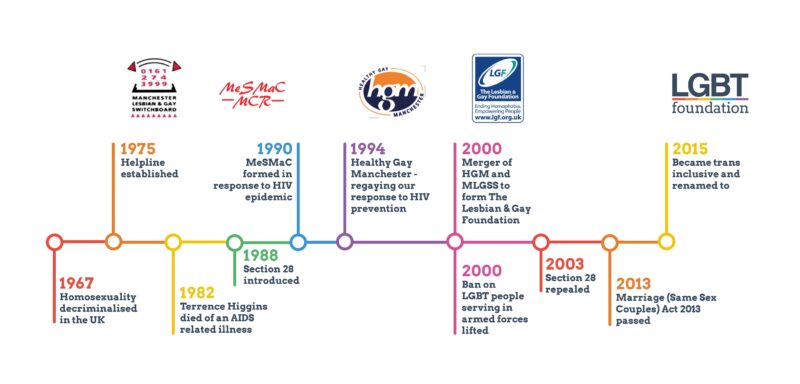
Since this is a month of celebrating LGBTQ history, have students come together as a class or in small groups to create a unique and engaging timeline that brings to life key moments, influential figures, and pivotal milestones in LGBTQ history.
Encourage students to break free from the confines of traditional two-dimensional timelines made with paper and pencils. Let their creativity soar as they explore alternative ways to represent the LGBTQ historical narrative, whether through art, multimedia, or interactive displays.
What makes this project truly special is its ever-evolving nature. As students get into research and engage in class discussions throughout the month of October, they can keep adding to the timeline with exciting new discoveries.
By the end of LGBTQ History Month, they’ll have a collaborative masterpiece that not only educates but also sparks inspiration.
Go on an LGBTQ history scavenger hunt
This activity involves making a scavenger hunt for kids by crafting a series of clues tied to significant LGBTQ historical figures, events, and milestones.
An LGBTQ history scavenger hunt consists of a series of cleverly crafted clues that will test students’ recall and understanding of information learned. Each clue leads students to a specific location, where they’ll discover the next clue.
For example, a clue about the historic Stonewall Inn might guide them to the lunchroom, while a hint related to the pioneering Harvey Milk could lead them to the library.
As students follow this captivating trail of clues, they’re not just solving a puzzle, they’re stepping into the shoes of LGBTQ trailblazers. With each discovery, they’ll gain a deeper understanding of the LGBTQ community’s remarkable heritage.
Start a discussion about gender and pronouns
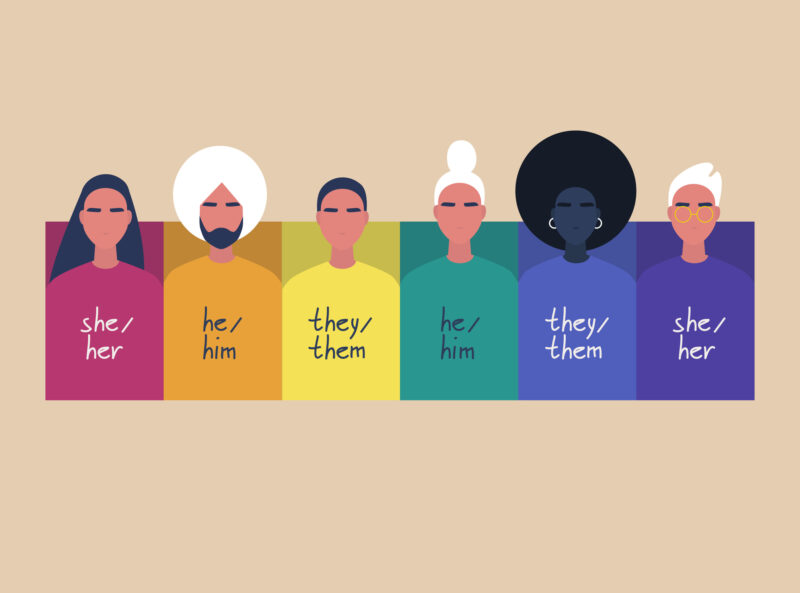
Have open conversations with students about gender identity and using the right pronouns. These chats can be scheduled on a weekly basis during the school day or as often as needed.
Through these discussions, students explore how people identify themselves and why it’s important to use the right words when we talk about them. These discussions help create a warm and welcoming learning environment where every student knows they are respected and accepted for who they truly are.
Hold a Mannequin Challenge: LGBTQ Edition
Looking to bring back the mannequin challenge with your students? Here’s a great way to weave it into their learning! Once students have delved into the inspiring lives of LGBTQ pioneers, activists, or historical figures, invite them to choose one of these trailblazers to bring to life.
Encourage them to dress up as their chosen figure and take on their emotions while they strike a pose to create a captivating living-history video display. This activity allows students to put themselves in someone else’s shoes, gaining a deeper appreciation for their efforts.
Record an LGBTQ story podcast
In this engaging project, students will become storytellers, working in pairs or small groups. They’ll practice their researching and writing skills as they craft questions to ask an LGBTQ historical figure. The best part is that they’ll also be scripting the fictitious yet realistic responses to the questions. Fun!
Then, they’ll bring history to life by voice recording these dialogues as if it were their very own podcast. This month-long initiative lets students explore history, improve their storytelling skills, and celebrate the inspiring journeys of LGBTQ pioneers, inviting everyone to listen and learn.
Design LGBTQ hero trading cards
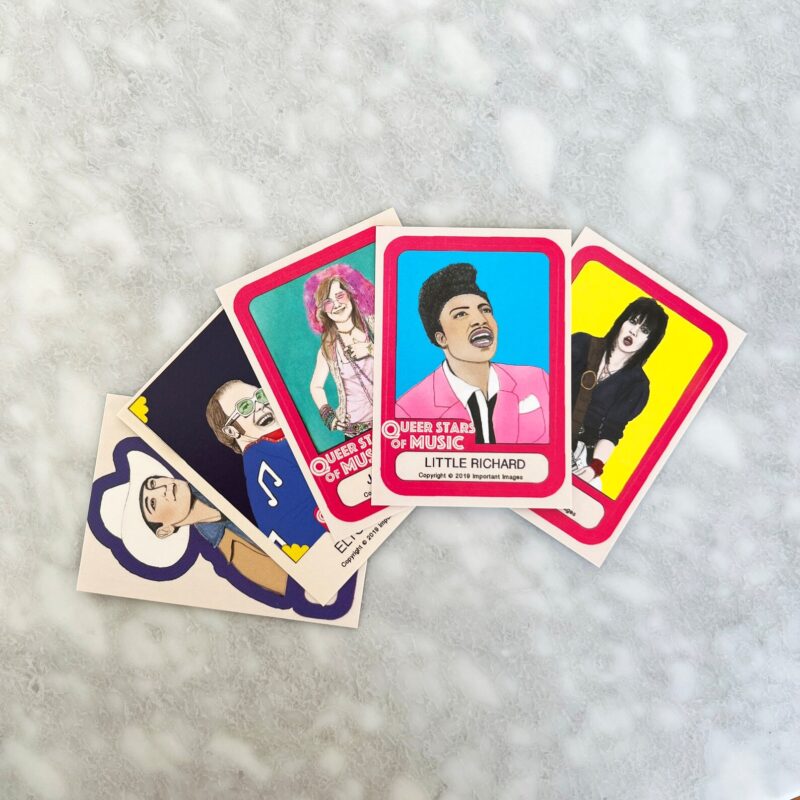
Inspire students to design trading cards featuring LGBTQ historical figures and impactful milestones, and even get them to include contemporary advocates. This engaging activity designed for kids fosters both learning and enjoyment.
Begin by sharing stories of diverse LGBTQ historical figures and events as well as contemporary advocates, emphasizing their inspiring achievements. Encourage students to take creative control as they design their own trading cards, using templates or crafting their designs from scratch. Each trading card becomes a canvas for their chosen LGBTQ figure, featuring meaningful illustrations, brief biographies, and notable achievements.
The excitement builds as students exchange these cards with their peers, actively learning about the history of the LGBTQ community. This interactive trading process fosters community, encourages discussions, and broadens their knowledge.
Whether it’s tailored for younger or older students, an LGBTQ hero trading card project will transform learning into an engaging celebration of diversity, history, education, and fun.
Create an LGBTQ history board game
Challenge your students to become game designers with an LGBTQ history board game activity. Get them to brainstorm, design game elements, craft questions, playtest, and refine their creations in order to make a board game that teaches players about LGBTQ history. At the end of the month, students can present their board games to the class.
This interactive and enjoyable activity invites students to embrace learning in disguise. Students deepen their understanding of LGBTQ history as they play, ensuring that every move on the game board is purposeful and involves learning.
Launch an LGBTQ book club
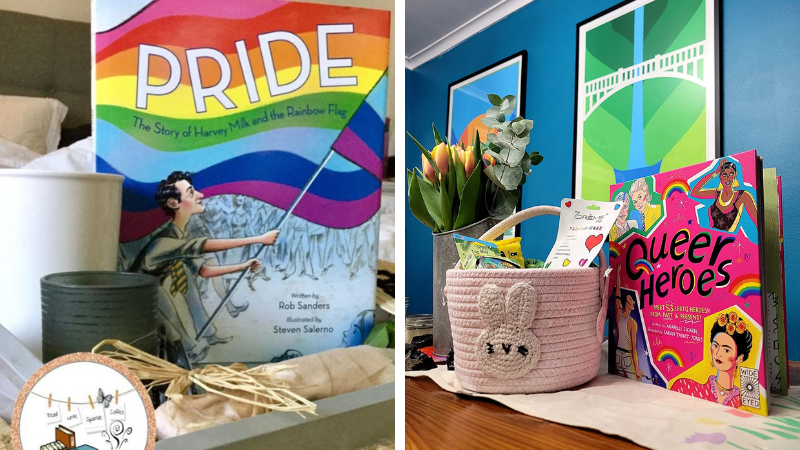
Foster engaging discussions and a love for LGBTQ history by organizing small group book clubs throughout October.
Have each group choose a book that they will read together that is centered around LGBTQ history, pioneers, or milestones. Encourage students to meet weekly to discuss what they have read and share any insights they have as they uncover the profound messages within the books they read.
If you’re looking for books to use in a book club, be sure to check out this list of books on LGBTQ history for kids.
Reenact LGBTQ history
Invite your students to take a hands-on approach to LGBTQ history learning.
Students can collaborate to write scripts that capture significant moments or speeches from LGBTQ history. Or they can opt for a solo act, where they might focus on one influential LGBTQ figure. The stage is theirs to compose compelling narratives that express important moments in history.
Whether they perform their skit in front of the class or through a recorded presentation, students have the opportunity to capture the essence and emotions of pivotal moments in history.
Participating in LGBTQ historical reenactment connects students with the past in a way that textbooks alone can’t achieve. This hands-on experience encourages creativity, empathy, and a deeper understanding of the LGBTQ community’s journey.
Turn your classroom into an LGBTQ history museum
Turn a classroom or school area into a captivating temporary LGBTQ history museum.
Challenge students to become curators, crafting thought-provoking exhibits that showcase LGBTQ history. They can create art pieces, display clothing, and craft artifacts that represent significant moments in history.
But it doesn’t stop there. Students will also serve as tour guides, sharing insights into the exhibits with peers and teachers. This interactive activity makes learning dynamic, encouraging questions, discussions, and knowledge sharing.
These activities are guaranteed to infuse LGBTQ History Month with engagement, education, and joy, making it a memorable experience for students of all ages. For additional inspiration, explore these delightful Pride Month activities as well.
Steps To Consider When Preparing for LGBTQ History Month
Preparing for LGBTQ History Month is about more than just a single month of recognition—it’s about instilling values of acceptance and understanding that last all year long. Here are essential steps to consider when getting ready for LGBTQ History Month:
Find inclusive curriculum and materials to use in the classroom
Incorporate LGBTQ-inclusive curriculum materials throughout the month of October and all year. It’s crucial to emphasize the significance of showcasing LGBTQ contributions not only during LGBTQ History Month but consistently throughout the school year. This approach establishes an educational environment that validates the LGBTQ community’s historical and contemporary relevance.
Always remember to use age-appropriate resources
Select age-appropriate books, videos, and resources to educate students about LGBTQ history and issues. Tailoring the content to their developmental stage ensures that it’s engaging, comprehensible, and respectful of their age-related sensitivities.
Open the dialogue with students
Begin by creating a safe and inclusive space where students feel comfortable discussing LGBTQ topics openly. Stress the importance of respectful and non-judgmental communication, setting the stage for celebrating diverse perspectives.
Talk about diverse perspectives
Explore LGBTQ figures from various backgrounds and time periods, shedding light on their achievements and challenges. This widens students’ horizons, nurturing empathy and a deeper comprehension of LGBTQ diversity.
Express the importance of allyship
Promote the concept of being an LGBTQ ally among your students. Encourage them not only to understand but also to actively support their LGBTQ peers. Highlight the importance of standing up against discrimination, bullying, or prejudice whenever they encounter it.
Educate kids about pronouns
Empower your students with an understanding of why it’s crucial to respect each other’s pronouns and gender identities. Teach them that using correct pronouns is a way of affirming someone’s identity, a simple yet powerful act of respect. Encourage open discussions around pronouns, helping students grasp the significance of this inclusive practice in promoting a respectful classroom environment.
Consider asking your fellow educators to participate in training
Ensure that all members of the school community, from teachers to administrators, have access to information and resources to effectively support LGBTQ students.
More Resources To Guide Your Teachings
To make the journey of educating about LGBTQ history smoother, here are some valuable resources you’ll want to check out:
- Making Your School a Safe Space for LGBTQ Students
- Inspiring Books on LGBTQ History for Kids of All Ages
- Children’s Books With LGBTQ+ Characters
- Fun Pride Month Activities To Promote Love and Acceptance
- Making Gay History Podcast
- Lesson Plans To Create LGBTQ+ Inclusive Classrooms and Schools
- The Trevor Project – The Coming Out Handbook
Incorporating LGBTQ history into education is a crucial step in promoting diversity and understanding in the classroom. The ideas and resources outlined in this article will help create a learning environment where every student feels valued and heard. Join us in embracing diversity and help shape a generation that celebrates equality and fosters empathy.
Be the first to know when our newest content is released! Sign up for our newsletters.
Plus check out these Free Kindness Posters to hang in your classroom.
